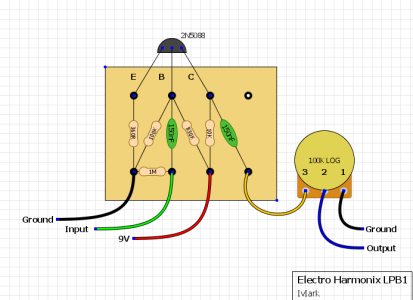idsnowdog
Imperator of Indignation
I recently bought a Kokko Overdrive pedal and it's nearly identical sounding to a Tube Screamer. It's good for adding a bit of dirt to an already dirty amp but it isn't very loud when compared to a newer design like a Joyo Ultimate Drive. Would replacing the 100K level pot with a 250K level pot increase output? Because otherwise the disparity in volume between the two is so drastic that they basically don't belong together on the same pedal board.


